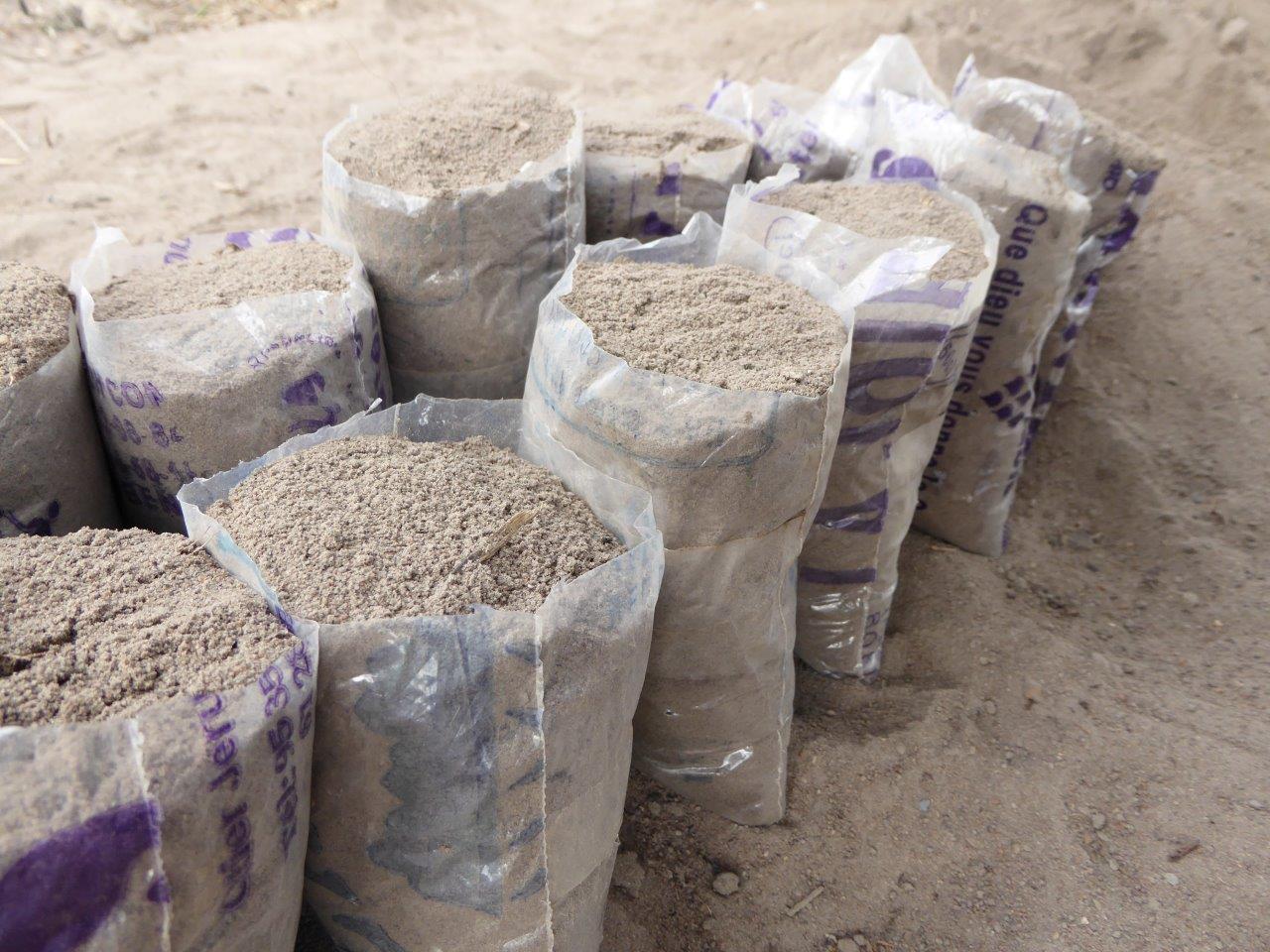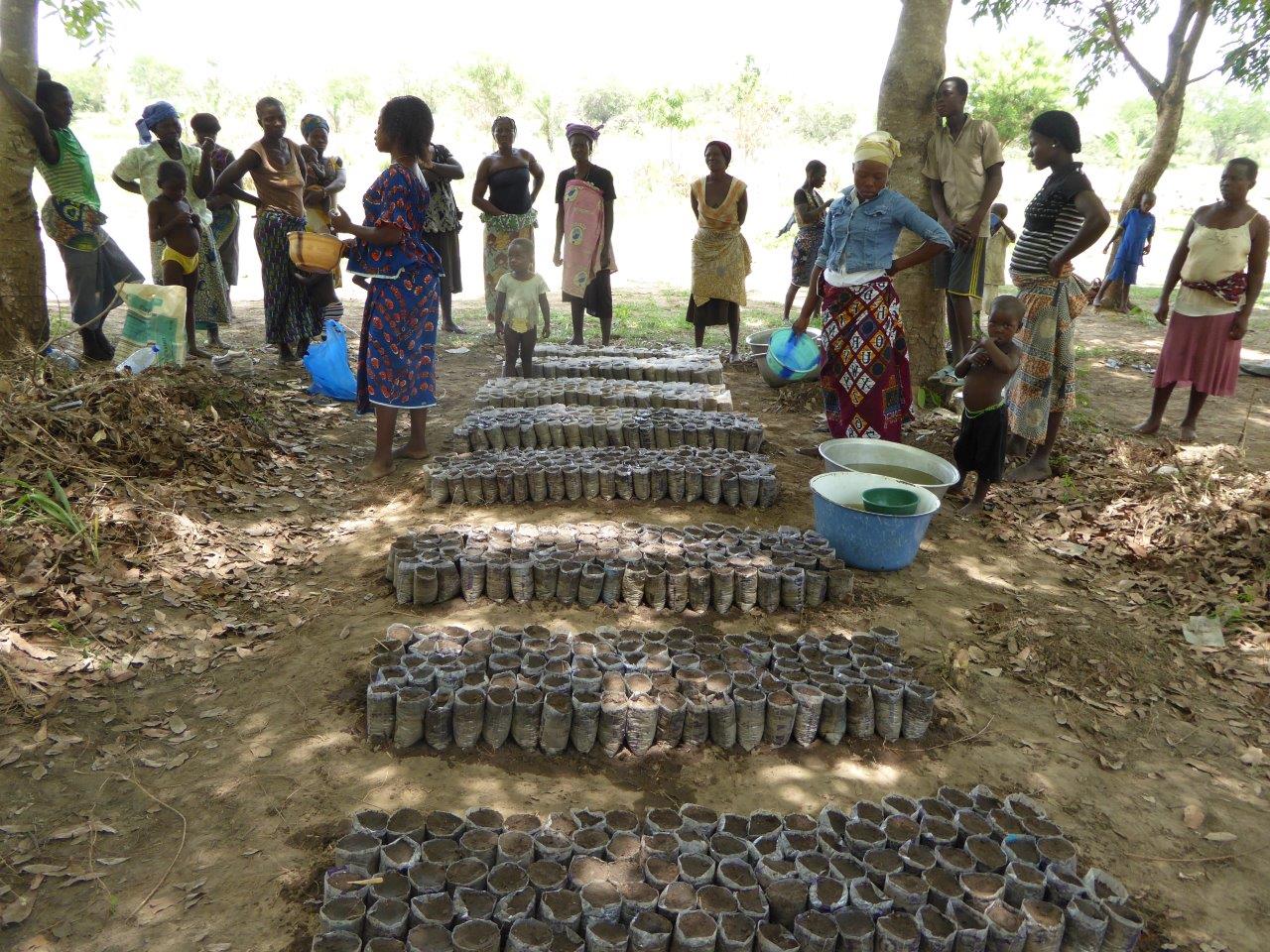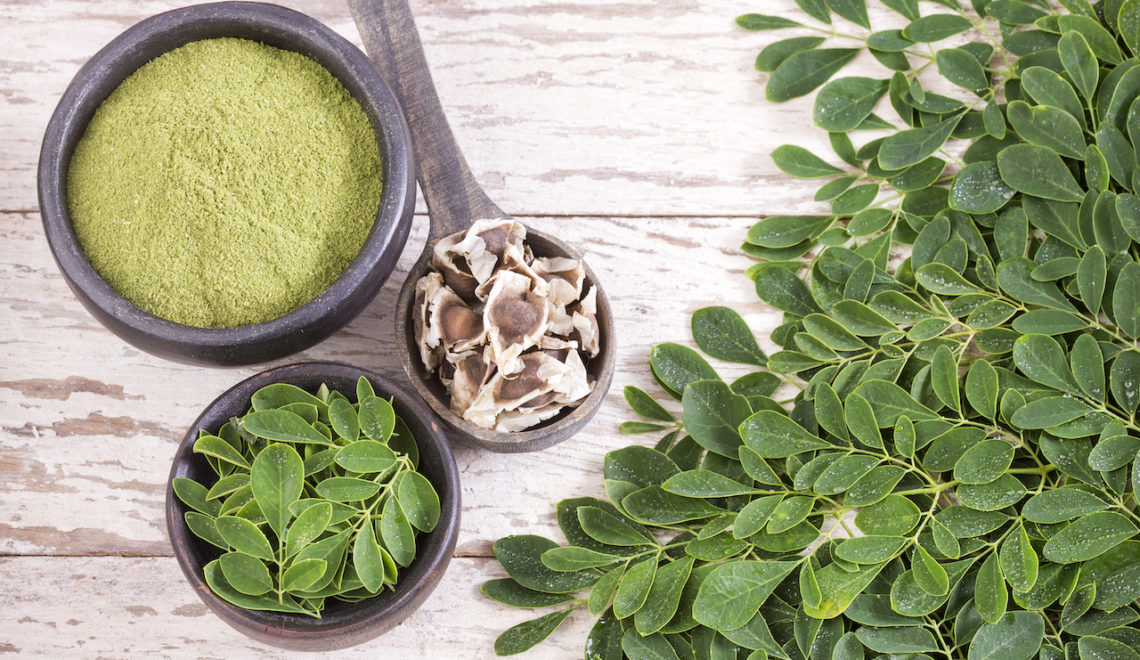
Kuli Kuli Blogger Julie Curtis is currently living in Benin as a Peace Corps volunteer. The following is a personal account of her experience growing moringa in West Africa.
Growing Moringa in West Africa
Moringa is a “miracle” plant and given the right conditions, that miracle can grow like a weed. My new home of West Africa experiences trees growing up to 15 feet in one year with little water. In order to take full advantage of this non-native tree, my Beninese counterpart and I recently created two moringa nurseries.
First and foremost, why nursery? Why not replication or direct seeding? With a nursery you have more control. Replication, is simply when you take a tree cutting and stick it in the dirt. Although this method is less labor intensive and can provide quicker results, it will not allow the roots to develop fully and therefore give you a weaker and less wind, rain, or person-leaning-against-it resistant tree.
For many, direct seeding which is planting moringa directly in a bed as you would with vegetables, could work. But the reason it will fail in many developing parts of the world is the fact there is a large amount of free range livestock. As soon as a seedling starts providing leaves, a neighboring goat is bound to gobble up those nutritious leaves. Your tree will be left no more than a dead stick in the ground. So, voila, tree nursery it is.
How to Grow Moringa at Home
Following these easy steps, you too can start growing moringa right in your backyard.
If you can, start a compost. Generally, they take about three months of weekly mixing and watering to provide highly nutrient rich natural fertilizer. This takes some preparation and is not necessary for your nursery but will give the boost your seedling may need to quickly take off into a big, healthy moringa tree. This can be especially beneficial if you are in a dry climate, as compost enriched soil can absorb up to ten times the moisture soil alone can absorb.
Where to find bags?
Ideally, use recycled ones. In my village, you can find on average 2,648 empty bags every square mile. Okay, that statistic is made up, BUT you really can find bags littered everywhere. Through some light bribing of children, in just four days we were able to get more than 6,000 bags off the streets and into our garden to start the nursery. Just the local EPA at your service. No matter where you are in the world, there is more than likely a wasteful activity you can profit off of and get those nursery bags green and cheap.
The next step once you have the bags is to fill them with quality soil. Moringa prefers sand to clay so find good, fine soil, but be cautious to finding sand that is completely nutrient deprived. A balanced soil that weighs heavier on the sand will serve your nursery well.
Once you have a well filled bag of soil, poke some small holes in the bottom. With holes that are too big or too numerous, the roots might start creeping out of the bag and into the ground, making future transport much more difficult. The holes are just to allow excess water to pass through. Moringa, a desert-tolerant tree needs the most water early on in its life but even then, it does not need much. Watering is done when the soil is dry to the touch, which in a dry climate likely means every morning.
Setting Up Your Nursery
Place the filled, punctured bags of soil into semi-direct sunlight. If free range animals are a concern, build a fence around the bags to protect from unwanted visitors. If you have compost available, now is the time to use it. With just a pinch of compost and your moringa seed, push the seed into the soil just to the first crease in your pointer finger. Water heavily immediately after planting.
In about two months, in the right climate, your nursery should be in full swing. You can now feel free to replant the moringa to a permanent location. For my counterpart and I, that means giving away the thousands of trees to our women’s groups who in a year from now will sell us the moringa leaves that we will use to make a powder. This in efforts to reforest Africa, battle malnutrition, and to empower women with income generating activities. Go baby moringa trees, go.












